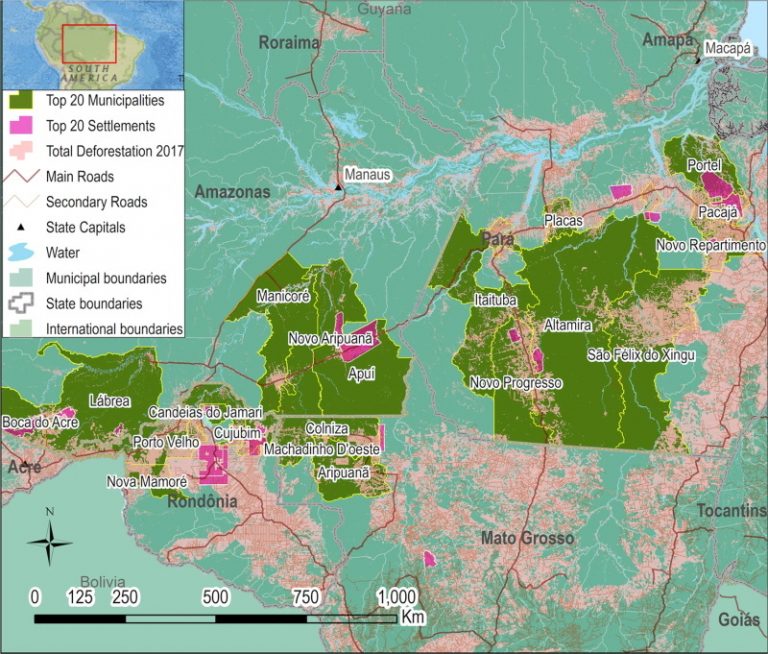
CARRERO – Deforestation Trajectories on a Development Frontier in the Brazilian Amazon: 35 Years of Settlement Colonization, Policy and Economic Shifts, and Land Accumulation
Gabriel Cardoso Carrero, Philip Martin Fearnside, Denis Ribeiro do Valle, & Cristiano de Souza Alves
Article first published online: 16 SEPT 2020 Environmental Management
DOI: 10.1007/s00267-020-01354-w
ABSTRACT: We examine deforestation processes in Apuí, a deforestation hotspot in Brazil’s state of Amazonas and present processes of land-use change on this Amazonian development frontier. Settlement projects attract agents whose clearing reflects land accumulation and the economic importance of deforestation. We used a mixed-method approach in the Rio Juma Settlement to examine colonization and deforestation trajectories for 35 years at three scales of analysis: the entire landscape, cohorts of settlement lots divided by occupation periods, and lots grouped by landholding size per household. All sizes of landholdings are deforesting much more than before, and current political and economic forces favoring the agribusiness sector foreshadow increasing rates of forest clearing for pasture establishment in Apuí. The area cleared per year over the 2013–2018 period in Apuí grew by a percentage more than twice the corresponding percentage for the Brazilian Amazon as a whole. With the national congress and presidential administration signaling impunity for illegal deforestation, wealthy actors, and groups are investing resources in land grabbing and land accumulation, with land speculation being a crucial deforestation factor. This paper is unique in providing causal explanations at the decision-maker’s level on how deforestation trajectories are linked to economic and political events (period effects) at the larger scales, adding to the literature by showing that such effects were more important than aging and cohort effects as explanations for deforestation trajectories. Additional research is needed to deepen our understanding of relations between land speculation, illegal possession of public lands, and the expansion of agricultural frontiers in Amazonia.
Read the full publication at Environmental Management